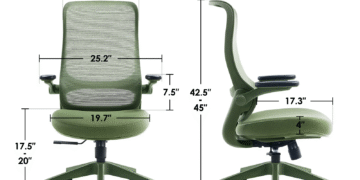The construction industry is growing, and despite the increase in material prices, there is still plenty of activity on the horizon. As new generations join, it’s important to know how to select the correct hoarding for every job. Before you can make the right choice, you need to know the available options. While there are three different classes of hoardings, Type A and Type B are the most commonly used.
Hoardings are great for advertising, hiding unsightly construction, building brand awareness, and safety, and attracting new customers. It’s also an excellent way to build anticipation for a new site.
Type A
Type A hoarding systems are designed to secure building site perimeters. Type A temporary hoarding systems are useful for preventing unauthorised access to a building site, as well as offering privacy and ensuring public safety during construction works.
Type A temporary hoarding is generally made from metal, MDF or plywood timber and is usually self-supporting. These hoarding walls are effective for preventing debris and dust from leaving the work zone, but they are also an effective advertising material backdrop for businesses. You will most commonly see these hoarding panels on construction sites, but they are also used in train stations, airports, and shopping centres that are undergoing construction work.
In a residential construction setting, Type A hoarding walls are an excellent choice for additional privacy if there is a concern regarding safety or security.
Graphics can be printed for branding purposes, community engagement or even to serve as an informational guide if the hoardings are around a visiting exhibition.
Type B
Type B hoarding walls are also known as gantry or overhead hoardings in Australia. This is because they offer protection against falling debris overhead. Type B hoarding panels are typically used for construction work that takes place where access for pedestrians or vehicles is still required. For example, if there is high-rise construction in a central business district, then pedestrians still require access to a footpath. As a result, Type B hoarding walls need to be designed with a minimum strength of 10kPa to ensure they can withstand falling objects, from construction tools to large debris. Type B hoardings are usually made using steel, and they are bolted to the ground.
Hoarding Products You Need To Know About
Floor-to-ceiling hoardings are ideal for extra privacy and security, and these are usually used in shopping centres and businesses.
Freestanding hoarding is often used in public areas where security and privacy aren’t a particular concern. Taller freestanding hoardings are common for residential construction areas.
If you need a modern partition system for internal uses, Envirowall is fast, clean, and cost-effective. It is much easier to install when compared to drywall construction, and sustainable.
Fastwall is an excellent mobile solution for segregating or sectioning off different areas.
Hoardfast is hygienic screening, it is generally used in education, manufacturing, leisure, offices, healthcare, and retail settings during temporary construction works. It has a smarter appearance, which allows it to work seamlessly in any environment. There is also an opportunity for graphics or branding, as well as vision panels if necessary.
There are plenty of hoarding options for all of your needs, and whatever your project or site.
Also, Read: How to Gather Documents for a Total and Permanent Disability Claim

















